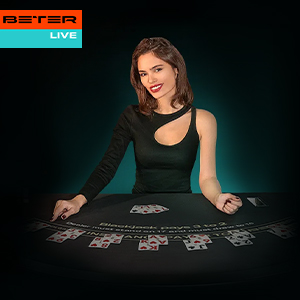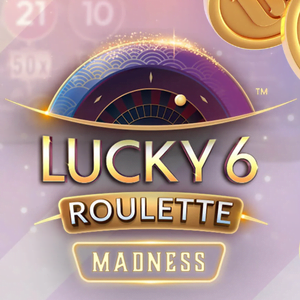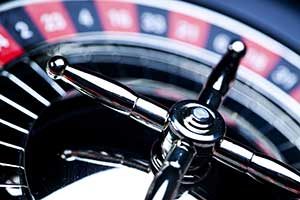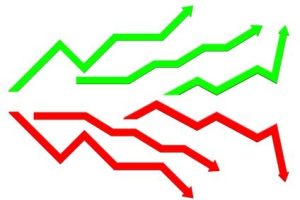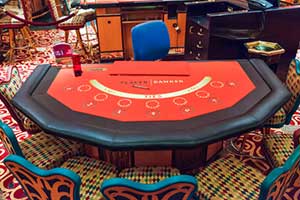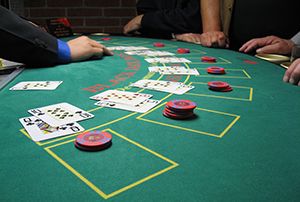
1) Start practicing the basic but effective high-lo count with one deck of cards.
Assign the value of +1 to 2s, 3s, 4s, 5s, and 6s. Assign the value of 0 to 7s, 8s and 9s. Assign the value of -1 to 10s, Js, Qs, Ks and Aces. Now count down the deck cumulatively card by card, establishing what is called the running count. If you have done so correctly, you will finish the count at 0. Repeat this until you get the final running count correct five straight times.
2) Repeat the card-counting exercise but this time counting two cards together.
You still maintain the cumulative count. Again, if you do not arrive at 0 at the end of the deck you have made a mistake. Repeat this until you get it correct five straight times.
3) Repeat the process counting three cards together and then four cards together.
Learn how to offset plus and minus cards to make the count easier. You must arrive at 0 five consecutive times counting both three cards together and four cards together.
4) Repeat the cumulative running count using two decks, then four decks, and finally six decks.
Get it right three consecutive times for each by reaching a final running count of 0.
5) Learn how to convert the running count into the true count.
All betting and hand-play decisions are based on the true count, which is simply the cumulative running count divided by the number of decks remaining. You calculate the number of decks remaining by taking into account the number of decks that have already been played. You do this because on a live blackjack table you cannot judge the number of decks remaining by looking into the card shoe.
6) Learn how to round off decks remaining to the next whole.
For example, if there are approximately 3.5 decks remaining, you round it up to four. If there are 3.4 decks remaining, you round it down to three. By practicing you will develop a keen eye for accurately estimating the amount of decks and half-decks to be played.
7) Making the conversion.
If you have a running count of +4 with two decks remaining, you have a true count of +2. If you have a running count of -4 with two decks remaining, you have a true count of -2. Round off the true count number the same way you rounded off the number of remaining decks.
8) Simulate a blackjack game with seven player positions and deal the cards, counting them as you deal.
You must always retain the cumulative running count, then convert it to the true count at the end of each initial deal and again after the hit cards come out. After each hand is played, revert back to the running count and repeat the process. You should spend several hours on this as it can get a bit tricky and you will need the time to consistently get it done accurately.
9) Learn the betting strategies and hand decisions using the high-lo count.
If you don’t already know basic strategy, learn it first. Basic strategy is the essential core of card-counting play as hand-decisions while counting only vary from it 20% of the time. Go online and study both the betting and hand-play strategies for the high-lo count. There are many sites that provide this information.
10) Incorporate all the facets of the high-lo count.
With six decks, deal out hands to seven player positions. Bet and play each hand according to the true count. I recommend obtaining gaming chips and actually placing them accordingly on your blackjack table. You can also buy an inexpensive blackjack layout online to increase your familiarity with the real game. Remember to never lose memory of the running count each time you convert to the true count. Begin each new deal with the cumulative running count you had at the end of the previous hand. If you lose the running count, go back and start over from zero.
You now have all the basics to master the high-lo count. Practice makes perfect.



































 Roulette
Roulette
 Blackjack
Blackjack
 Baccarat
Baccarat
 Poker
Poker
 Sic Bo
Sic Bo
 Dragon Tiger
Dragon Tiger
 Game Shows
Game Shows  Top 5 Games
Top 5 Games  See more
See more  Roulette Casinos
Roulette Casinos  Low Limit
Low Limit  High Limit / VIP
High Limit / VIP  Exclusive
Exclusive  How to Play
How to Play  Basic Strategy
Basic Strategy  Top Tips
Top Tips  FAQ
FAQ  Blackjack Casinos
Blackjack Casinos  Baccarat Casinos
Baccarat Casinos  Bonuses
Bonuses  Poker Casinos
Poker Casinos  Game Providers
Game Providers  Sic Bo Casinos
Sic Bo Casinos  Dragon Tiger Casinos
Dragon Tiger Casinos  Credit and Debit Card
Credit and Debit Card  e-Wallet
e-Wallet  Cryptocurrency
Cryptocurrency  Bank and Checks
Bank and Checks  Pay by Phone and SMS
Pay by Phone and SMS  See more
See more  How-To Guides
How-To Guides  Top Lists
Top Lists  In-Depth
In-Depth  Strategy
Strategy  Casino & Games
Casino & Games  Insight
Insight  News
News  Promotions
Promotions  Guide to Live Casinos
Guide to Live Casinos  Top 10 Live Casino Tips
Top 10 Live Casino Tips  FAQ & Help
FAQ & Help  Meet The Dealers
Meet The Dealers  Our Awards
Our Awards  Responsible Gambling
Responsible Gambling 
































 ENG
ENG 


